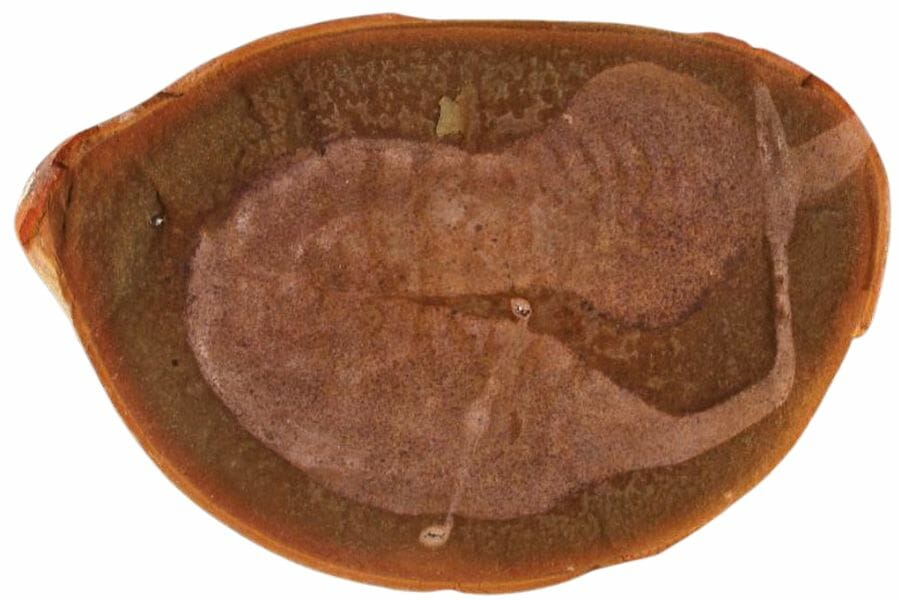Illinois is a treasure trove for fossil enthusiasts! From the ancient ferns and horsetails to the remains of marine critters like brachiopods and trilobites, you never know what you might stumble upon.
If you’re lucky, you might find something as strange as the Tully Monster, a unique sea creature named the state fossil of Illinois. Most of these fossils are from more than 300 million years ago when Illinois was a swampy paradise and the bottom of an ancient sea, and this period was called the Pennsylvanian.
Finding a fossil is cool because it’s like touching ancient history. We can learn a lot about life millions of years ago from the remains of plants and animals.
Every fossil has a story to tell. This means that each one is not just a fascinating artifact but also a way to learn about the history of our planet.
The Fossils Of Illinois You Can Find
If you look in the right places, you can find many different kinds of fossils in Illinois. From Tully monsters to brachiopods, it has them all!
Let’s look at the different fossils you can find in Illinois.
- The extensive local experience and understanding of our team
- Input from multiple local fossil hunters and fossil groups
- The accessibility of the various locations
- Safety and potential hazards when collecting
- Private and public locations
- A desire to include locations for both experienced fossil lovers and those who are just starting out
Using these weights we think we’ve put together the best list out there for those who love finding great new fossils for our collections!
Common Illinois Fossils
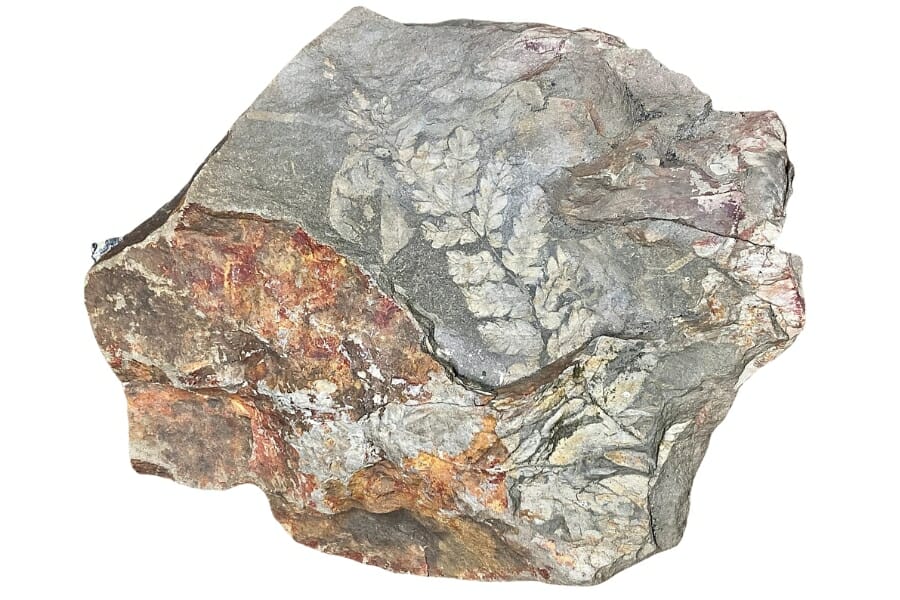
There are many different kinds of fossils in Illinois. Here are some examples of common fossils:
- Brachiopods
- Corals
- Crinoids
- Ferns
- Gastropods
- Horsetails
- Shark teeth
Illinois State Fossil – Tully Monster
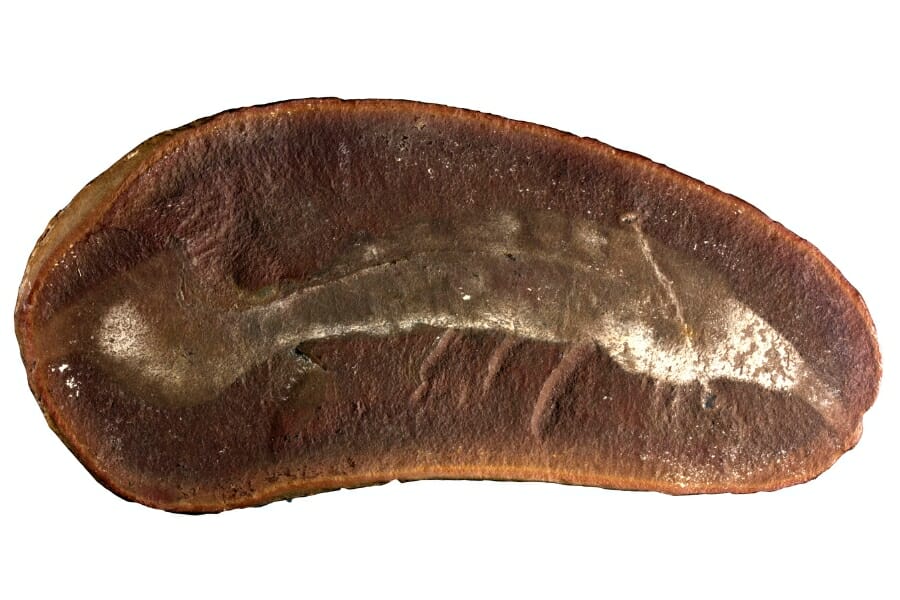
The Tully Monster, whose scientific name is Tullimonstrum gregarium, is the state fossil of Illinois and a real mystery in paleontology. These 300-million-year-old fossils are primarily found in the Mazon Creek fossil beds.
They show a marine creature with a soft body, a long snout, and eyes on stalks. Even after decades of research, scientists still don’t know how to classify the Tully Monster, which leads to ongoing scientific debate.
These interesting fossils show how complex marine ecosystems used to be and how different life was in the past.
Rare State Fossils
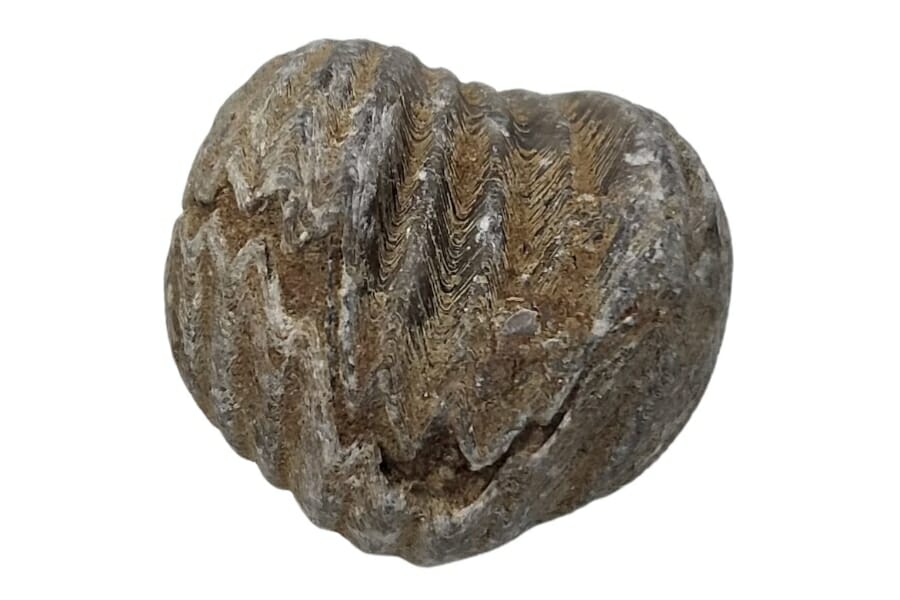
We’ve also listed rare and valuable fossils found in Illinois below. Watch out for these fossils as you explore:
- Amphibians
- Eurypterids
- Fish Fossils
- Insect Fossils
- Jelly fish
- Reptiles
- Unique Crustaceans
The Best Places To Find Fossils In Illinois
We will talk about some excellent places to look for fossils in Illinois. We’ll focus on what we think are the best options, even though there are many. You’ll enjoy visiting these places and finding cool rocks and minerals.
Always Confirm Access and Collection Rules!
Before heading out to any of the locations on our list you need to confirm access requirements and collection rules for both public and private locations directly with the location. We haven’t personally verified every location and the access requirements and collection rules often change without notice.
Many of the locations we mention will not allow collecting but are still great places for those who love to find beautiful rocks and minerals in the wild without keeping them. We also can’t guarantee you will find anything in these locations since they are constantly changing.
Always get updated information directly from the source ahead of time to ensure responsible rockhounding. If you want even more current options it’s always a good idea to contact local rock and mineral clubs and groups
Grafton Quarries
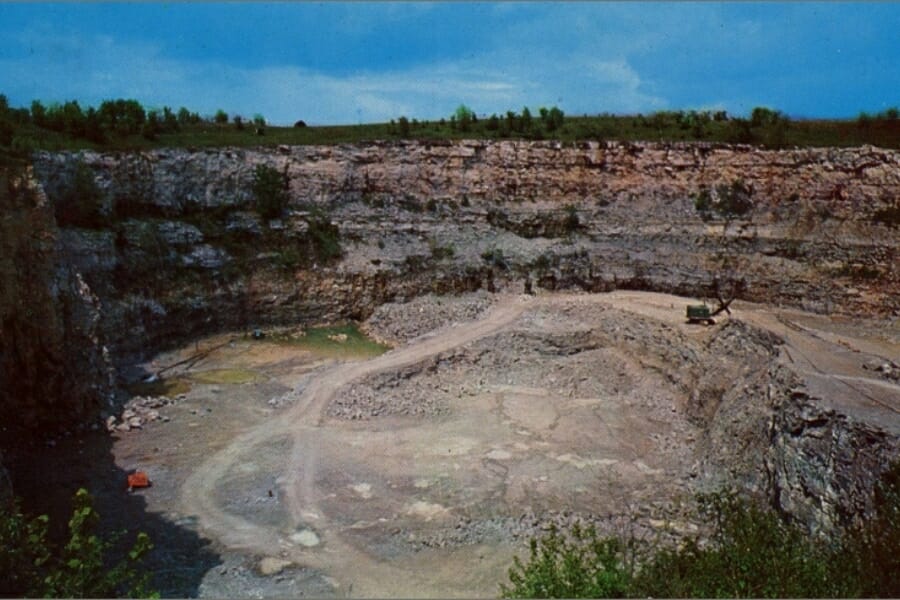
Grafton Quarries is popular with geologists, amateur paleontologists, and people who like fossils. The quarries are near where the Illinois and Mississippi Rivers meet. They show sedimentary rock layers that offer the area’s geological history.
The area has many marine fossils, proving that this part of North America was once covered by water. In the rocky outcrops, you can often find brachiopods, crinoids, and corals, which give you a glimpse of life from hundreds of millions of years ago.
Grafton Quarries is a great place to look for fossils because the deposits are so rich, and there are many different kinds of fossils to find. There are a lot of well-preserved marine fossils in the area because it used to be a seabed.
Where and what to find fossils in Grafton Quarries
The area is rich in marine fossils such as brachiopods, crinoids, and corals, and they are commonly found in sedimentary rock layers that were once the bottom of ancient seas.
If you want REAL results finding incredible rocks and minerals you need one of these 👇👇👇
Finding the coolest rocks in isn’t luck, it's knowing what to look for. Thousands of your fellow rock hunters are already carrying Rock Chasing field guides. Maybe it's time you joined the community.
Lightweight, mud-proof, and packed with clear photos, it’s become the go-to tool for anyone interested discovering what’s hidden under our red dirt and what they've already found.
Join them, and make your next rockhounding trip actually pay off.
What makes it different:
- 📍 Find and identify 140 incredible crystals, rocks, gemstones, minerals, and geodes across the USA
- 🚙 Field-tested across America's rivers, ranchlands, mountains, and roadcuts
- 📘 Heavy duty laminated pages resist dust, sweat, and water
- 🧠 Zero fluff — just clear visuals and straight-to-the-point info
- ⭐ Rated 4.8★ by real collectors who actually use it in the field
Mazon Creek Fossil Beds
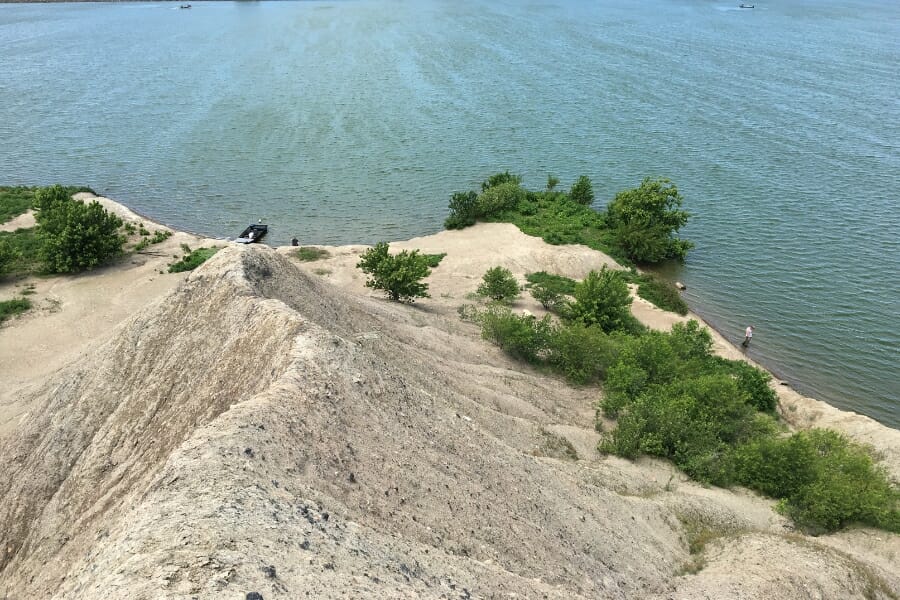
The Mazon Creek Fossil Beds are a paleontological treasure trove because they have kept many fossils in great shape. These fossil beds are about an hour’s drive southwest of Chicago.
They are from the Pennsylvanian period, about 300 million years ago. The site is known for its concretions, which are round piles of sedimentary rock that often contain fossils that have been well preserved.
Mazon Creek is exceptional because it can preserve even soft tissues. This gives scientists and nature lovers a unique look at ancient ecosystems. It’s one of the few places in the world where you can find jellyfish, worms, and even Illinois’ state fossil, the mysterious Tully Monster, that are so well preserved.
Where and what to find fossils in Mazon Creek Fossil Beds
You can look for fossils in the concretions, which are often exposed along riverbanks, especially after it rains or there is a lot of erosion. Because of differences in the ancient environment, different parts of the Mazon Creek area have different kinds of fossils.
You might find plant fossils in one area and marine invertebrates in another.
Mazonia – Braidwood State Fish and Wildlife Area
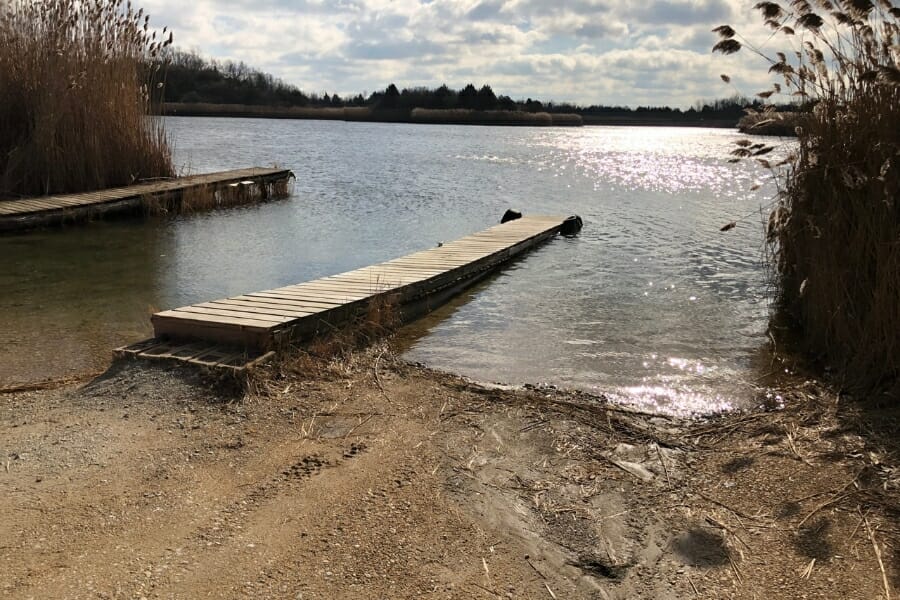
The Mazonia-Braidwood State Fish and Wildlife Area is unique for people who like to be outside. Not only can you fish and watch wildlife there, but you can also learn about the Earth’s history.
This area is in the state’s northeast, close to Braidwood and Wilmington’s towns. It covers over 1,000 acres, most of which were once mined for coal. The result is a landscape of man-made lakes and rough terrain that is beautiful and important from a geological point of view.
The state has made collecting fossils in certain parts of the Mazonia-Braidwood State Fish and Wildlife Area legal. This makes it a popular place for both amateur and professional paleontologists, as well as fossil enthusiasts.
Where and what to find fossils in Mazonia-Braidwood State Fish and Wildlife Area
The fact that there are so many and different fossils from the Pennsylvanian period in concretions, which are round nodules of sedimentary rock, makes this area especially appealing to fossil hunters.
When you open these concretions, you can find perfectly preserved plant and animal parts, like ferns and horsetails, marine invertebrates like brachiopods, and even the mysterious Tully Monster, Illinois’ state fossil.
Mississippi River Bluffs
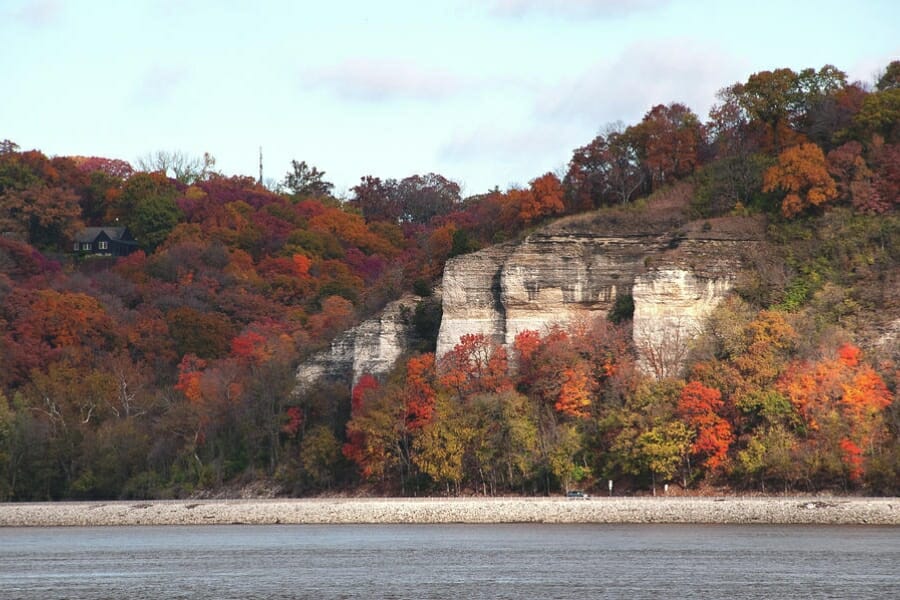
The Mississippi River Bluffs are a great place to see beautiful scenery and many fossils. Along the state’s western edge, these tall cliffs offer sweeping views of the mighty Mississippi River and reveal millions of-year-old rock layers.
The bluffs are mostly made of sedimentary rocks like limestone and shale, often full of fossils. From the Ordovician to the Carboniferous, this area was covered by ancient seas, which can be seen in the fossil record.
With its dramatic landscapes and fossil-rich grounds, this area is a fantastic destination for anyone intrigued by natural history and the beauty of the great outdoors.
Where and what to find fossils at Mississippi River Bluffs
There are a lot of marine invertebrates like brachiopods, crinoids, and trilobites, which give us a look at how ecosystems used to work in the past. You might also find fossils of ancient fish or plants like ferns and horsetails.
You may need permission to collect fossils in some places, but you can go fossil hunting elsewhere.
Rockford, Illinois
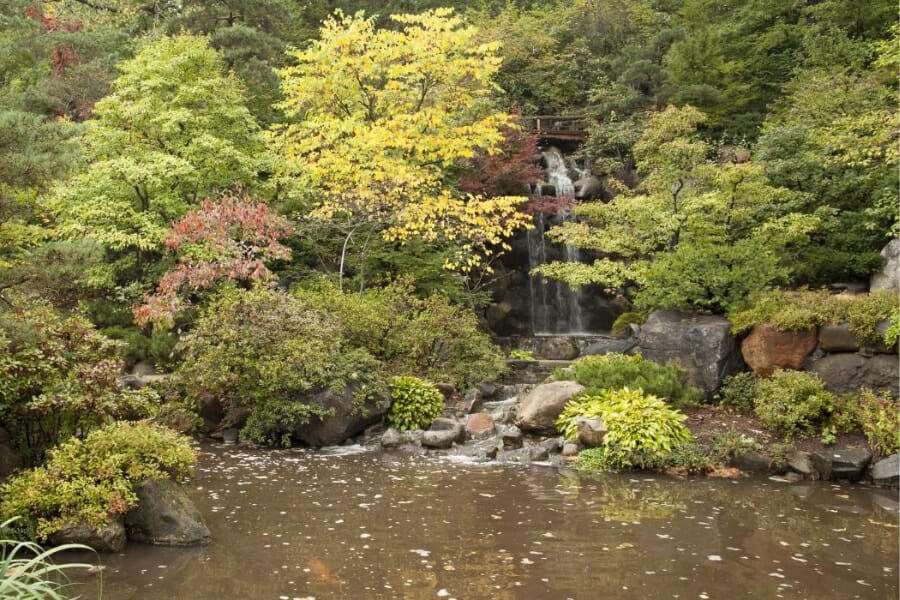
Rockford is a city in northern Illinois known for its long history in the industrial world, lively arts scene, and opportunities for outdoor recreation. But what many people may not know is that Rockford and the area around it are also great places for people who like fossils.
The area’s geology, made up of sedimentary rock formations from ancient seas and swamps, makes it a good place to find evidence of life from a long time ago. These rocks, from the Ordovician to the Silurian to the Devonian, show Earth’s history over millions of years.
Rockford is a place that has something interesting for everyone because it has both city amenities and natural wonders.
Where and what to find fossils in Rockford, Illinois
In the Rockford area, brachiopods, crinoids, corals, and trilobites are often found in layers seen in quarries, riverbanks, and road cuts. These fossils are in good shape, so we can see what the oceans were like hundreds of millions of years ago.
Shale layers sometimes show fossils of ferns and other plants for people more interested in plant fossils.
Other Top Places To Find Illinois Fossils By Region
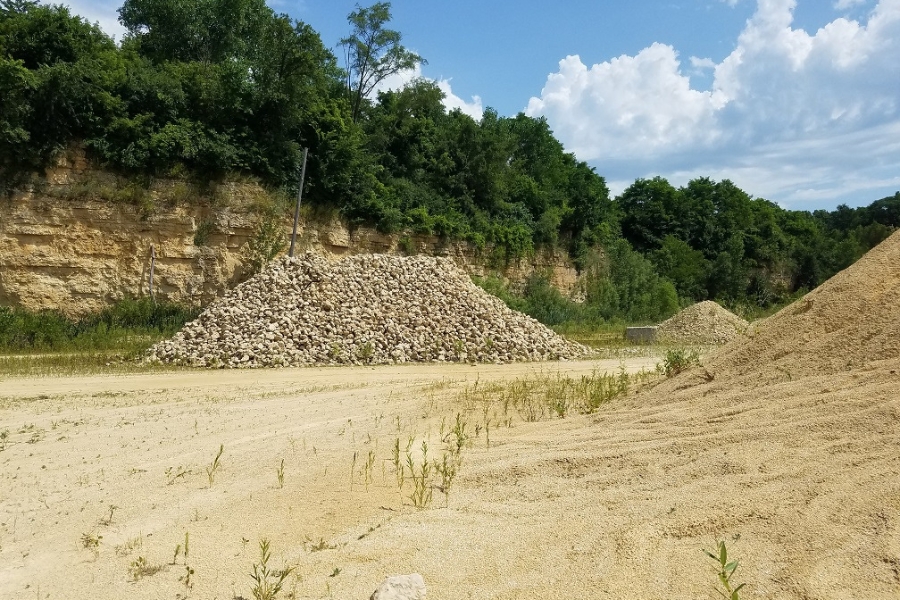
After discussing the best places to find fossils in Illinois, we will suggest other great places to look for fossils. We’ve made a list of them below to help you out.
| Location | Fossils |
| Niota area gravel pits and stream banks, Hancock County | Mason Creek fossils |
| Coal exposures along branch of McGee’s Creek | Discina, Aviculopecten |
| Coal City area mine dumps | Concretions with fossils |
| County wide on coal mine dumps and other exposures of coal measures, Perry County | Plants, Brachiopods, Crinoids |
| Terra Haute area gravel pits and mine dumps, Henderson County | Masok Creek fossils |
| Thebes area along Orchard Creek, Alexander County | Masok Creek fossils |
| Numerous mines of Sparta, Randolph County | Blastoids |
| Danville Quarries, Vermilion County | Marine fossils |
| In banks and bed of Okaw River in Carlyle area, Clinton County | Bryozoa, Productus, Spirifer |
| In cliffs along Blue River in Fredericksburg, Washington County | Talorocrinus, Conodonts |
| Lone Star Quarry, Oglesby | Crinoids, snails, corals, brachiopods and rare trilobites |
| Lemont area quarries, Will County | Fossils |
| Old quarries in Quincy | Archimedes, Agaricocrinus, Actinocrinus, Spirifer, Productus, Zaphrentis |
| Northwest of Old Colchester Quarry in Plymouth, Hancock County | Brachiopods, Corals, Crinoids |
| Mill Dam at Blackberry Creek in Bristol, Kendall County | Brachiopods, Corals, Crinoids |
| Wall of Plum River Valley, Jo Davies County | Gastropods, Orthoceras |
| Reef exposures in large quarries at Thornton, Cook County | Brachiopods, Crinoids |
| Wilmington regional mines in the coal formations on dumps, Will County | Fossils |
Common Questions About Fossil Hunting In Illinois
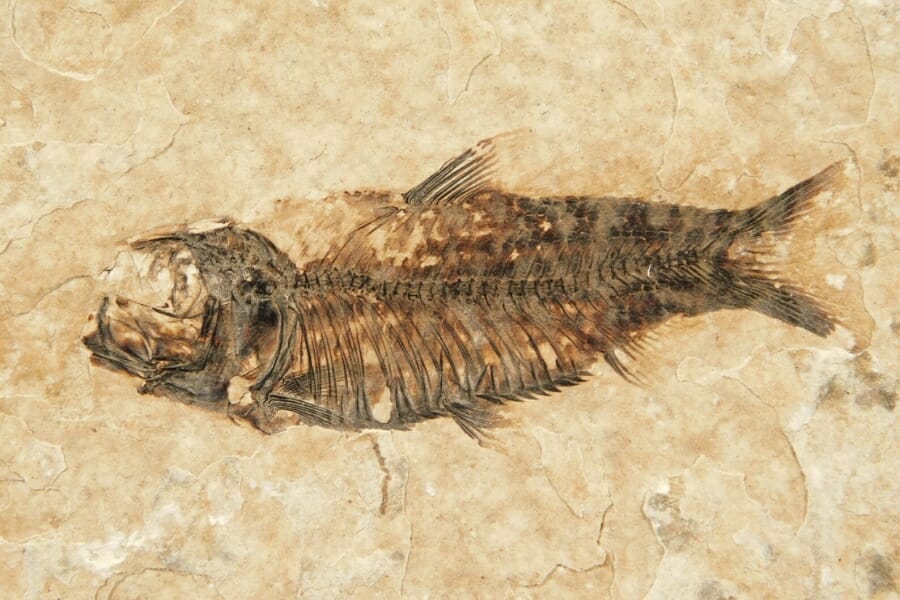
People often ask these questions about fossils in Illinois, and it’s important to answer them.
Can you find megalodon teeth or shark teeth in Illinois?
No, you are unlikely to find megalodon teeth or other shark teeth in Illinois. The reason is geological: the types of rock formations and the age of those formations in Illinois don’t match the environments or periods where megalodons or most other sharks would have lived.
Megalodon teeth are primarily found in younger, marine sedimentary rocks along the coasts or regions once covered by shallow seas during the Miocene and Pliocene epochs (approximately 23 to 2.6 million years ago).
Is it illegal to collect fossils in Illinois?
How legal it is to collect fossils in Illinois depends on the type of land you are on and the rules that apply to that area. You must ask the owner for permission to collect fossils on private land.
State-owned lands like parks often have their own rules and may require permits. For example, the Mazonia-Braidwood State Fish and Wildlife Area has certain areas where fossils can be collected, but you need a permit.
Without a scientific research permit, it’s usually against the law to collect fossils on federal land like national parks. There may also be rules about collecting fossils in your town or city.
If you want to collect fossils, you should talk to the proper state, local, or federal agencies to find out what is allowed and what isn’t. If you don’t follow these rules, you could get fined, have your fossils taken away, or face other legal consequences.
Always responsibly collect fossils to keep the environment and fossil record safe for future generations.
Can you find dinosaur bones in Illinois?
No, dinosaur bones are not typically found in Illinois. The geology and age of the rock formations in Illinois don’t align with the periods when dinosaurs roamed the Earth.
The state’s fossil-bearing rocks are largely from the Pennsylvanian and earlier periods, which predate the Mesozoic era (approximately 252 to 66 million years ago) when dinosaurs lived.
Most of Illinois’s fossil-bearing formations are sedimentary rocks formed in ancient marine environments, river deltas, or coal swamps.
Our Favorite Places To Buy Fossils In Illinois

Not everyone enjoys digging through the ground to find fossils. You can also go to our local rock shops if you don’t want to work too hard to get your hands on these ancient treasures. Here’s a wide range of what we have to offer:
- Artworks of Nature – 216 N Main St, Creve Coeur, IL 61610, United States
- Crystal Earth Rock Shop – 1125 S Main St J, Lombard, IL 60148, United States
- Dave’s Down to Earth Rock Shop – 711 Main St, Evanston, IL 60202, United States
- On The Rocks Gems Jewelry – 5709 N Clark St, Chicago, IL 60660, United States
- The Rock and Soul – 229 S Clark St, North Utica, IL 61373, United States

